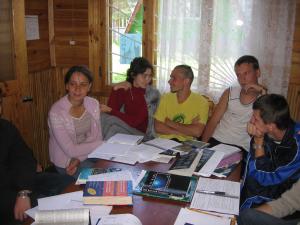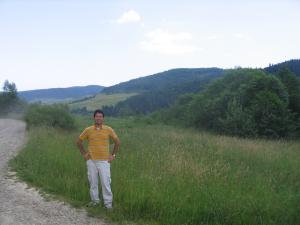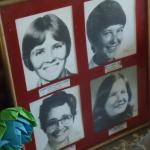In June 2006 I traveled to a country about which I knew very little. I landed at the airport in Lviv early one morning looking forward to spend five weeks teaching English at the Catholic University of Ukraine. On the most recent Feast of Christ the King, Pope Francis greeted pilgrims from Ukraine, especially as they remembered the millions who died of starvation from 1932 to 1933 under Stalin’s rule. Estimates reveal that between seven to ten million Ukrainians died when the Soviet regime seized Ukrainian farmland provoking a terrible famine called the Holodomor. This man-made event was part of Stalin’s strategy to break the Ukrainian spirit, and kill their desire to be independent from the Soviet Union.
Pope Francis prayed “for Ukraine so that the strength of faith can help heal the wounds of the past and promote paths of peace.” In 2006, I found a nation that was still coming to terms with its tumultuous recent past, a reality that has continued to the present day. The struggle is not over. Ukraine has been in the news in the past few years as Ukrainians battle for the future vision of their country, whether it points to Western Europe or to Russia. The president of the Catholic University of Ukraine, Father Borys Gudziak, explained to us, the eighteen English immersion program volunteers, that the university not only wished to provide rigorous academic training, but to transform and heal Ukrainian society. He spoke of the deep wounds which caused most people to walk the streets of Lviv with their heads down. He spoke of his desire to help Ukrainians rediscover their rich heritage, including their language, which the Soviets desperately tried to eradicate. As the first Catholic academic institution to open in the East after the fall of the Soviet Union, Father Gudziak has overseen a new springtime in the growth and development of the Catholic Church especially in Western Ukraine. While I was there, a new seminary blessed by Pope John Paul II was about to open, and five of my nine English language students were seminarians.

My students had participated with great enthusiasm in the 2004 Orange Revolution where a series of peaceful protests led to the annulment of a rigged election. There was great hope among them when a pro-Europe president was elected. However, in 2010, the disgraced pro-Russia presidential candidate from 2004 was elected president, only to be ousted by violent protests in 2014 and the Russian annexation of Ukrainian provinces. As I followed the news about Ukraine a few years ago, I thought of the unattained hopes of my students and the difficulties ahead in regards to healing the wounds of the past.
Both the Church and various governments stand in solidarity with Ukraine as its people seek a better future. The US State department declared on the anniversary commemoration of the Holodomor, “the United States stands with the people of Ukraine as we commemorate this Soviet-manufactured tragedy and condemn efforts to deny it as a historical fact. We also reaffirm our commitment to a secure and prosperous Ukraine, free from external aggression and occupation, and able to choose its own future.”

Pictures are mine, all rights reserved.













